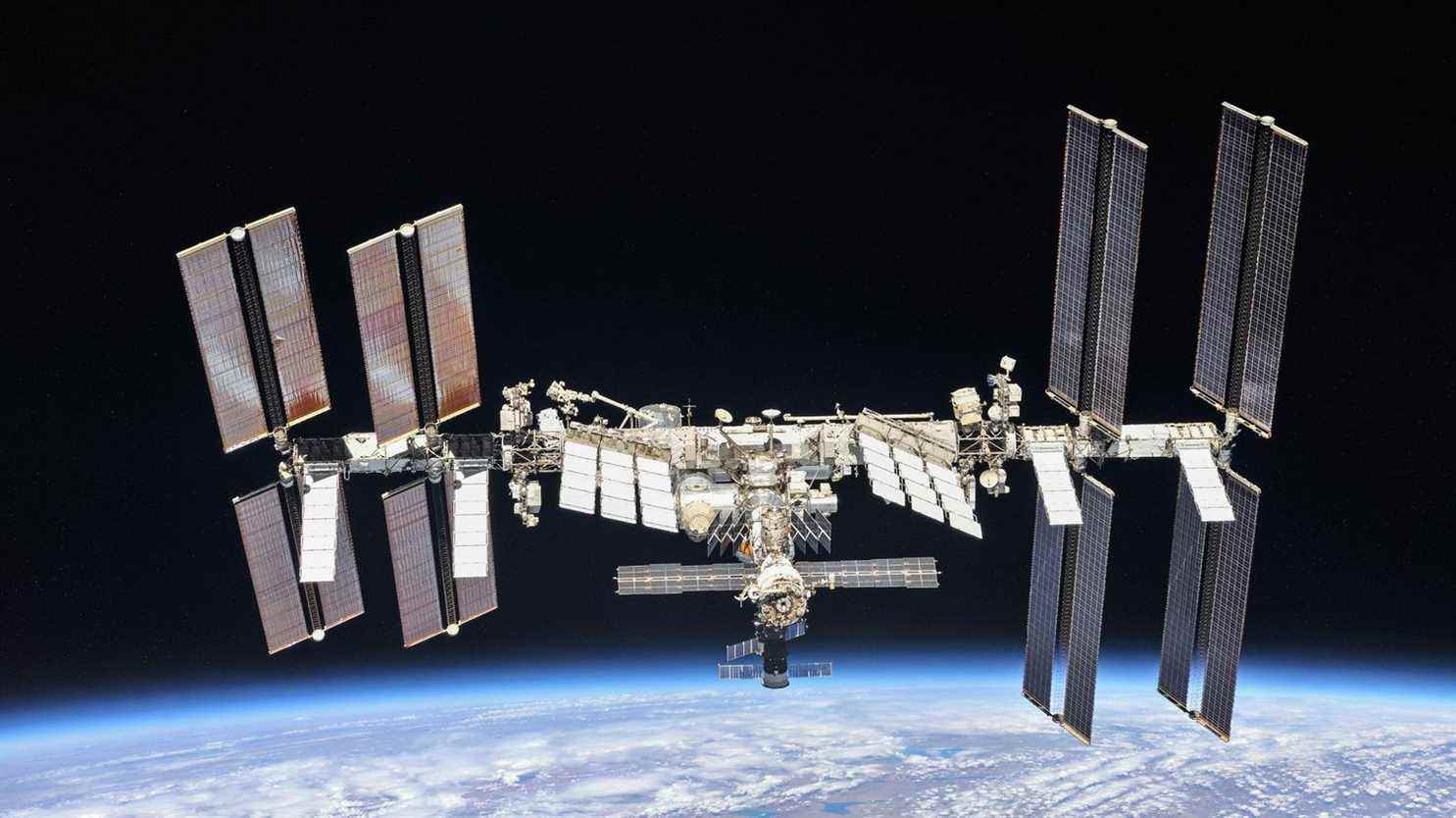A threat of 420 tons above our heads? The director general of the Russian space agency Roscosmos, Dmitry Rogozin, said on Saturday that the International Space Station (ISS) could crash on Earth because of Western sanctions taken against Russia after the invasion of Ukraine.
>> War in Ukraine: the latest information in our live
At the center of concerns, the supply of an essential module, which could very soon be disrupted, according to Roscosmos, by the measures taken against the regime of Vladimir Putin. Until now relatively preserved from land conflicts, the ISS remains at the heart of American and European interests and is now the subject of unprecedented tensions since its launch in the late 1990s. Franceinfo takes stock of this unfolding geopolitical crisis. 400 kilometers above sea level.
1What is this alert based on?
In messages sent to the American (Nasa) and European (ESA) space agencies, the boss of Roscosmos draws a disastrous chain reaction linked, according to him, to the sanctions against Russia. For Dmitri Rogozin, these measures risk disrupting the operation of the Russian vessels that supply the ISS. Problem: the Russian module Zvezda, which allows the station to maintain its altitude, could then no longer play its vital role.

“The Russian segment ensures that the station’s orbit is corrected (on average eleven times a year), including to avoid space debris”, said Dmitry Rogozin, who posted on his Twitter account on Saturday a map of the world showing the area overflown by the ISS – and where the station could potentially crash. A wide band that includes the United States, the countries of the European Union and only a tiny part of Russian territory. This area where the ISS could crash could not be verified by franceinfo.
“People in other countries, especially those ruled by the ‘dogs of war’should think about the price of sanctions against Roscosmos”threatened Dmitry Rogozin, who frequently posts slogans and photo montages on social networks mocking Ukraine and its president.
Since putting its first ISS module into orbit in 1998, Roscosmos has played a key role in its expansion and maintenance. Three to four times a year, Soyuz rockets take off from the Baikonur cosmodrome (Kazakhstan), to propel the station’s supply vessels. The last such launch took place on February 15, nine days before Russia invaded Ukraine.
2Can the ISS continue to operate without Russia?
This is not currently possible, but this scenario is being actively explored, notably by NASA. On March 1, the American space agency declared that companies had offered their services to ensure the strategic supply of the ISS in place of Russia.
“Our friends at SpaceX are looking at how to improve our capabilities (in matter)“also said Nasa manned spaceflight manager Kathy Lueders in reference to billionaire Elon Musk’s company – already well involved in American space programs. On February 21, a Cygnus cargo ship, designed by the American conglomerate Northrop Grumman and the French Thales, delivered 3,800 kilos of material to the ISS. According to its designers, this type of ship is quite capable of providing the fuel needed to propel the station.

For its part, the European Space Agency is more discreet, even if it assured, in a press release dated February 28*, “fully apply the sanctions” decided by its member states. Space cooperation with Roscosmos was partially put on hold, after the withdrawal of Russian personnel from the French base in Kourou (Guyana) on February 26. As for the launch of the joint ExoMars program, bound for the red planet, it is “very uncertain” that it can take place this year, specifies the ESA.
3Could the station cause damage by falling back to Earth?
In the worst-case scenario, falling debris on Earth would indeed be feared. Two parameters must be taken into account. First, the disintegration of the structure raises questions. With its many modules and solar panels measuring 108 meters by 73 meters in total, the ISS could partially withstand re-entry into the Earth’s atmosphere, about 80 km above the ground. Much smaller spacecraft, such as a Russian cargo ship in 2015, and the Chinese space station Tiangong-1 in 2018, have already led to showers of small debris in the Pacific Ocean, without causing damage.
The other unknown in this equation would be the point of fall of this possible debris. Since the Earth is 70% covered in water, there is a very good chance that the remains of the station will end up at the bottom of a sea or an ocean. This is also the plan of NASA *, which provides for a “deorbiting” then a fully controlled crash of the ISS in 2031, at “point Nemo” in the South Pacific. – an isolated area used as a spacecraft graveyard. However, in the event of uncontrolled deorbiting, the duration of the descent of the ISS and its point of fall are the subject of intense speculation in the scientific community.
If we do not know with certainty the damage that the fall of the station would cause on Earth, compromising the ISS would be a strong symbol. Since its launch, more than 250 astronauts from 19 countries have followed one another*, in order to carry out thousands of unprecedented scientific experiments. – an example of international cooperation, initiated after forty years of cold war.
*All links followed by an asterisk lead to content in English.
